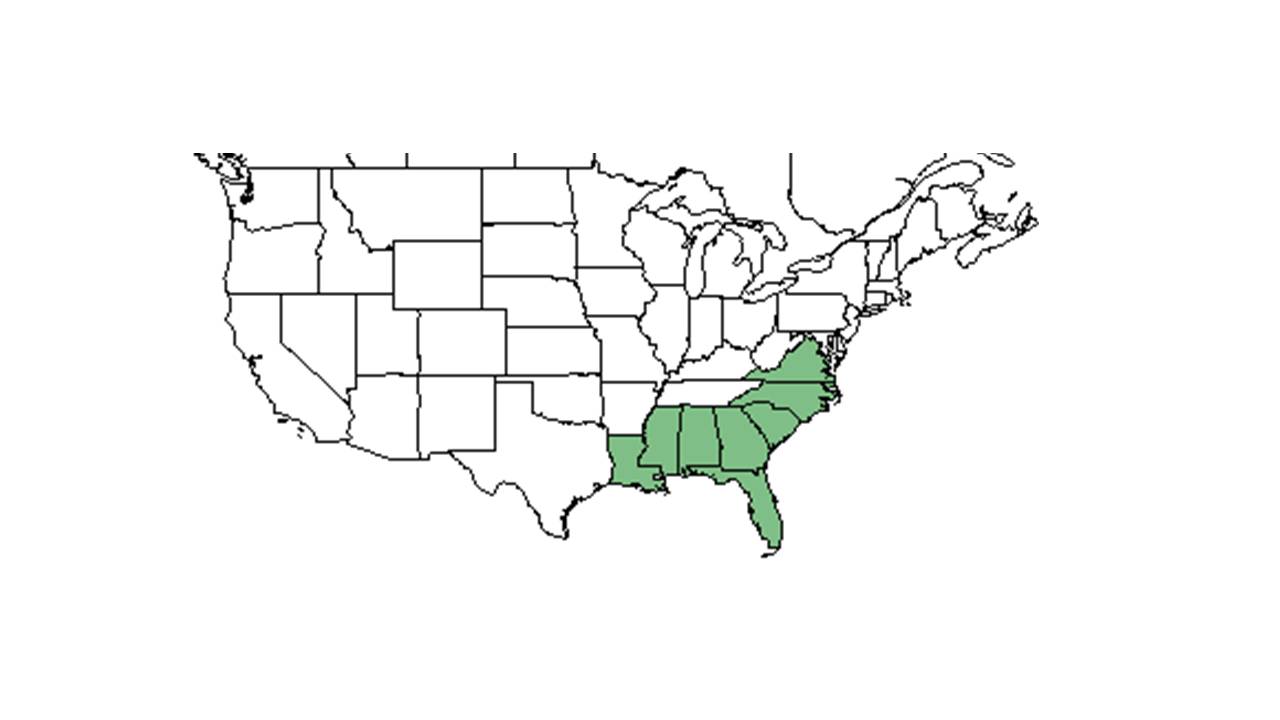Difference between revisions of "Tephrosia hispidula"
KatieMccoy (talk | contribs) |
KatieMccoy (talk | contribs) |
||
| Line 26: | Line 26: | ||
==Ecology== | ==Ecology== | ||
===Habitat=== <!--Natural communities, human disturbed habitats, topography, hydrology, soils, light, fire regime requirements for removal of competition, etc.--> | ===Habitat=== <!--Natural communities, human disturbed habitats, topography, hydrology, soils, light, fire regime requirements for removal of competition, etc.--> | ||
| − | + | In the Coastal Plain in Florida, ''T. hispidula'' can be found in recently burned longleaf pine/wiregrass communities; pine flatwoods; sandhills; mixed pine and hardwood swamps; edges of pond cypress wetlands; pine-scrub oak-palmetto woodlands; slash pine-wiregrass woodlands; and along the shore of rivers (Conde et al. 1983; FSU Herbarium; Gliztenstein et al. 2003). In disturbed habitats it has been found along grassy road margins, sand in open woods by a road, sandy peat of a pine flatwoods ditch, and a recently planted slash pine plantation. Substrate types include rich loamy sand, mucky sands, and dry sands (FSU Herbarium). It has been observed to grow with ''Tephrosia chrysophylla'' (FSU Herbarium). | |
| − | |||
| − | In the Coastal Plain in Florida, ''T. hispidula'' can be found in recently burned longleaf pine/wiregrass communities | ||
===Phenology=== <!--Timing off flowering, fruiting, seed dispersal, and environmental triggers. Cite PanFlora website if appropriate: http://www.gilnelson.com/PanFlora/ --> | ===Phenology=== <!--Timing off flowering, fruiting, seed dispersal, and environmental triggers. Cite PanFlora website if appropriate: http://www.gilnelson.com/PanFlora/ --> | ||
Revision as of 13:51, 14 October 2015
| Tephrosia hispidula | |
|---|---|

| |
| Photo taken by Gil Nelson | |
| Scientific classification | |
| Kingdom: | Plantae |
| Division: | Magnoliophyta – Flowering plants |
| Class: | Magnoliopsida – Dicotyledons |
| Order: | Fabales |
| Family: | Fabaceae ⁄ Leguminosae |
| Genus: | Tephrosia |
| Species: | T. hispidula |
| Binomial name | |
| Tephrosia hispidula (Michx.) Pers. | |

| |
| Natural range of Tephrosia hispidula from USDA NRCS Plants Database. | |
Common name: sprawling hoarypea
Contents
Taxonomic notes
Description
Distribution
Ecology
Habitat
In the Coastal Plain in Florida, T. hispidula can be found in recently burned longleaf pine/wiregrass communities; pine flatwoods; sandhills; mixed pine and hardwood swamps; edges of pond cypress wetlands; pine-scrub oak-palmetto woodlands; slash pine-wiregrass woodlands; and along the shore of rivers (Conde et al. 1983; FSU Herbarium; Gliztenstein et al. 2003). In disturbed habitats it has been found along grassy road margins, sand in open woods by a road, sandy peat of a pine flatwoods ditch, and a recently planted slash pine plantation. Substrate types include rich loamy sand, mucky sands, and dry sands (FSU Herbarium). It has been observed to grow with Tephrosia chrysophylla (FSU Herbarium).
Phenology
Seed dispersal
Seed bank and germination
Fire ecology
Pollination
Use by animals
Diseases and parasites
Conservation and Management
Cultivation and restoration
Photo Gallery
References and notes
Conde, L. F., B. F. Swindel, et al. (1983). "Plant species cover, frequency, and biomass: Early responses to clearcutting, burning, windrowing, discing, and bedding in Pinus elliottii flatwoods." Forest Ecology and Management 6: 319-331.
Glitzenstein, J. S., D. R. Streng, et al. (2003). "Fire frequency effects on longleaf pine (Pinus palustris, P.Miller) vegetation in South Carolina and northeast Florida, USA." Natural Areas Journal 23: 22-37.